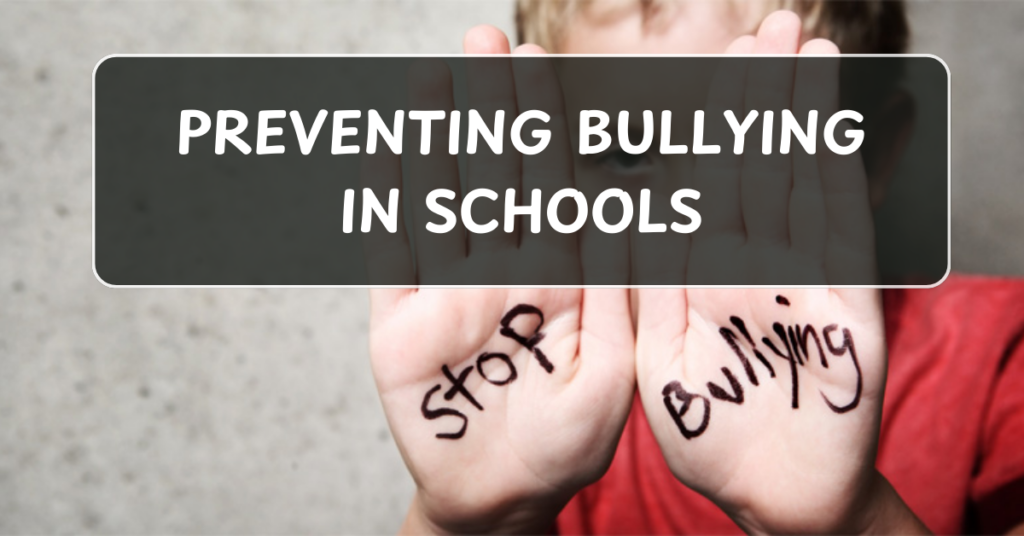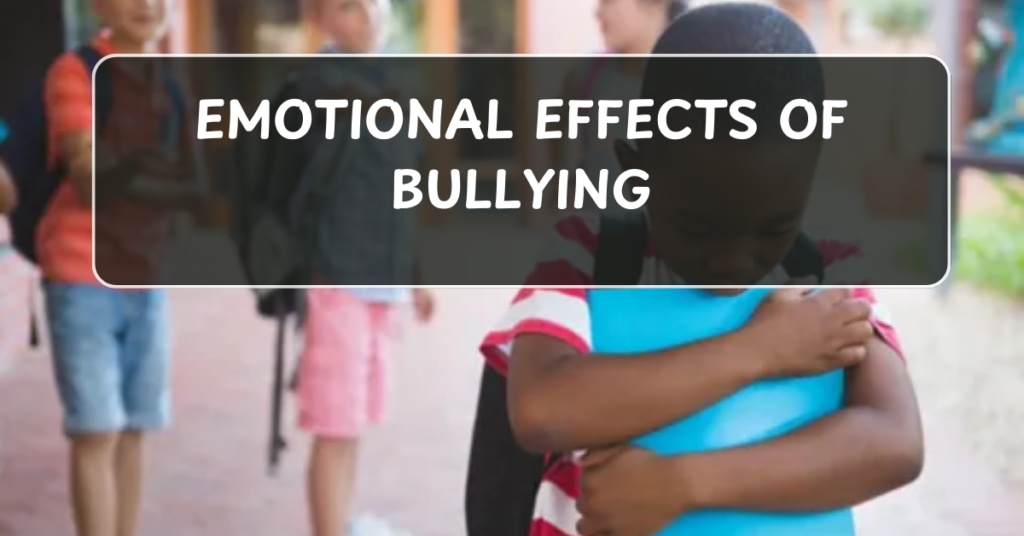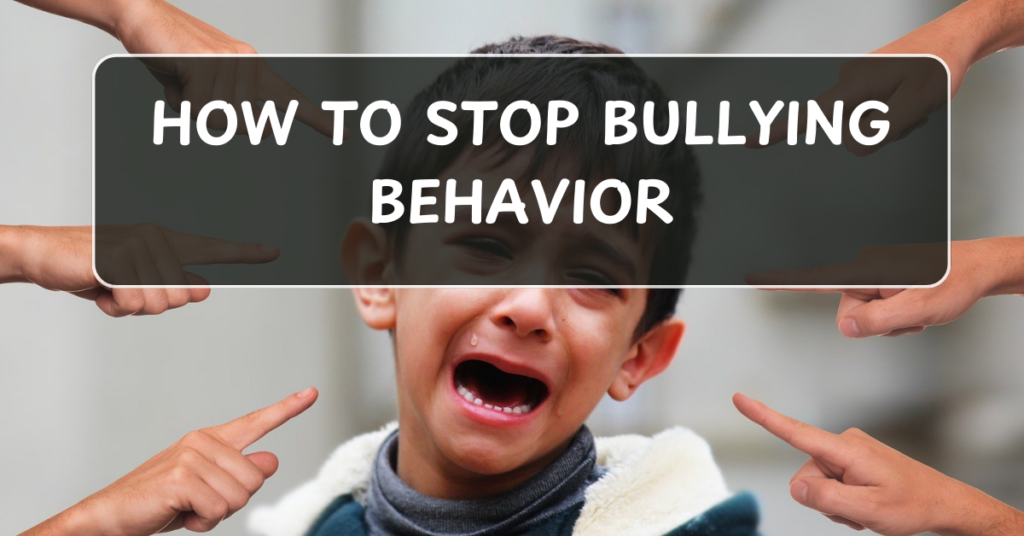
Bullying is a pervasive issue in schools that can have lasting emotional and psychological effects on children and teens. It’s vital for educators, parents, and students to work together to prevent bullying and create an environment where every student feels safe, valued, and supported. Here’s a guide to preventing bullying in schools, focusing on proactive measures, intervention strategies, and building a positive school culture.
1. Understand the Different Forms of Bullying
- Physical Bullying: Involves physical harm or intimidation, such as hitting, pushing, or damaging property.
- Verbal Bullying: Includes name-calling, teasing, and harmful gossip or rumors.
- Social/Relational Bullying: Spreading rumors, excluding others from groups, or intentionally isolating a student.
- Cyberbullying: Bullying that takes place online or through digital platforms like social media, texting, or gaming.
Recognizing the various forms of bullying is crucial in preventing it from escalating. Understanding the signs and manifestations helps schools address each type appropriately.
>> Put An END to Bullying NOW: Click Here to Learn How <<
2. Create Clear Anti-Bullying Policies
- Establish School-Wide Policies: Ensure that all students, staff, and parents are aware of the school’s stance against bullying. The policy should clearly define bullying, outline unacceptable behaviors, and include consequences for offenders.
- Zero-Tolerance Policy: A strong, zero-tolerance policy shows that bullying will not be tolerated and helps deter potential bullies.
- Student Code of Conduct: Develop a student code of conduct that includes respect for others, fairness, and responsibility, emphasizing kindness and inclusion.
3. Foster a Positive and Inclusive School Culture
- Encourage Respect and Empathy: Schools can hold workshops, discussions, and programs that teach students about empathy, respect for differences, and kindness.
- Celebrate Diversity: Promote an inclusive environment by recognizing various cultures, backgrounds, and identities. Create opportunities for students to learn from each other and appreciate diversity.
- Peer Mentorship Programs: Pair older students with younger ones to offer guidance, support, and friendship. This can prevent isolation and create a safer environment.
4. Educate and Train Staff
- Bullying Prevention Training for Teachers: Teachers should receive regular training on how to identify and respond to bullying. They must be able to recognize warning signs, intervene appropriately, and support both the victim and the aggressor.
- Encourage Active Supervision: Teachers and staff should be vigilant, especially in areas where bullying is more likely to occur, such as playgrounds, hallways, and lunchrooms. Active supervision helps prevent incidents before they escalate.
5. Encourage Open Communication
- Establish Safe Reporting Channels: Schools should create anonymous reporting systems, so students feel safe reporting bullying without fear of retaliation. This can include a suggestion box, an online platform, or a trusted teacher or counselor.
- Create Opportunities for Student Input: Allow students to voice their concerns in school forums or surveys. Getting their input on bullying-related issues helps create a sense of shared responsibility and empowers them to take an active role in preventing bullying.
- Promote Peer Support: Encourage students to report bullying and support their peers. Establish peer-support networks where students can turn to for help and advice.
>> Put An END to Bullying NOW: Click Here to Learn How <<
6. Engage Parents and Guardians
- Regular Communication with Parents: Schools should inform parents about anti-bullying policies, provide resources on how to talk to their children about bullying, and encourage them to monitor their child’s behavior and emotions.
- Parent-Teacher Partnerships: Strengthen relationships between parents and teachers. Encourage them to work together in addressing and preventing bullying behaviors.
- Support for Victims and Families: Provide counseling services and resources for families of children who are affected by bullying. Support systems should also be available for families of the bullies, to address underlying issues and prevent future incidents.
7. Implement Social-Emotional Learning (SEL) Programs
- Teach Social Skills and Emotional Regulation: SEL programs help students manage emotions, develop positive relationships, and make responsible decisions. These programs reduce bullying by teaching empathy, impulse control, and respect for others.
- Conflict Resolution Skills: Teach students how to resolve conflicts peacefully. This can reduce bullying incidents and encourage students to solve disagreements in healthy ways.
8. Encourage Student Leadership and Involvement
- Anti-Bullying Clubs or Initiatives: Establish student-led anti-bullying groups that work on creating positive change. These groups can hold campaigns, events, and awareness activities to promote kindness and discourage bullying.
- Empower Students to Speak Up: Encourage students to intervene when they witness bullying. Students should be empowered to step in or seek help when they see bullying taking place.
9. Implement Restorative Practices
- Restorative Justice for Bullies: When bullying occurs, restorative justice practices can help offenders understand the impact of their behavior, take responsibility, and make amends to the victim. This can prevent recidivism and help build empathy.
- Counseling for Bullies: Offer counseling for students who bully others to address the root causes of their behavior. This may include anger management, family therapy, or conflict resolution skills.
>> Put An END to Bullying NOW: Click Here to Learn How <<
10. Monitor and Evaluate the Effectiveness of Anti-Bullying Strategies
- Track Bullying Incidents: Regularly monitor and track bullying incidents to identify patterns, areas of concern, and effectiveness of interventions.
- Adjust Strategies as Needed: Evaluate bullying prevention programs annually. Gather feedback from students, parents, and teachers to make necessary adjustments and improvements.
Conclusion: A Collective Responsibility
Preventing bullying in schools requires a community effort. It’s not just about policies or punishment, but about creating a culture of respect, empathy, and inclusion. When schools, parents, and students work together, they can create environments where bullying is less likely to happen, and all children can feel safe, supported, and valued. By implementing these strategies, we can work towards building a future where bullying no longer has a place in our schools.
If you’re part of a school community, start today by advocating for these changes, and together we can make a real difference in the fight against bullying.


